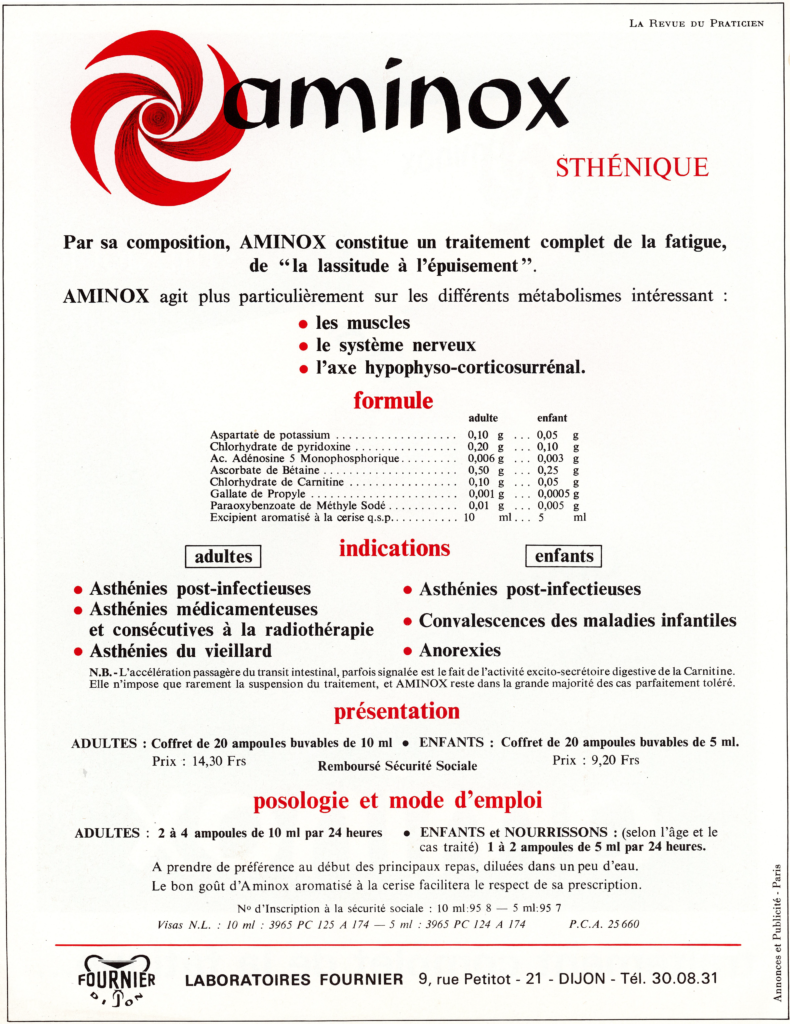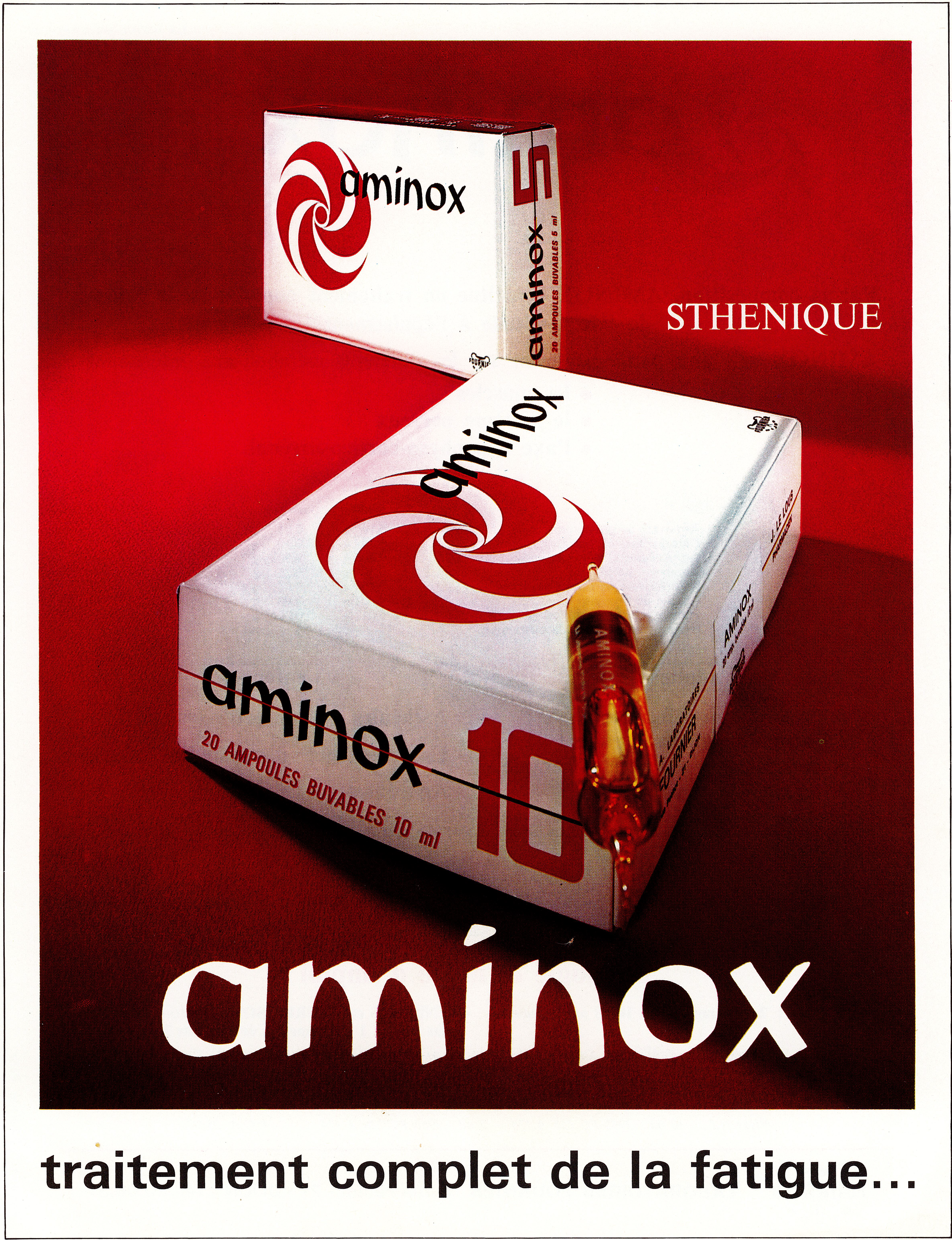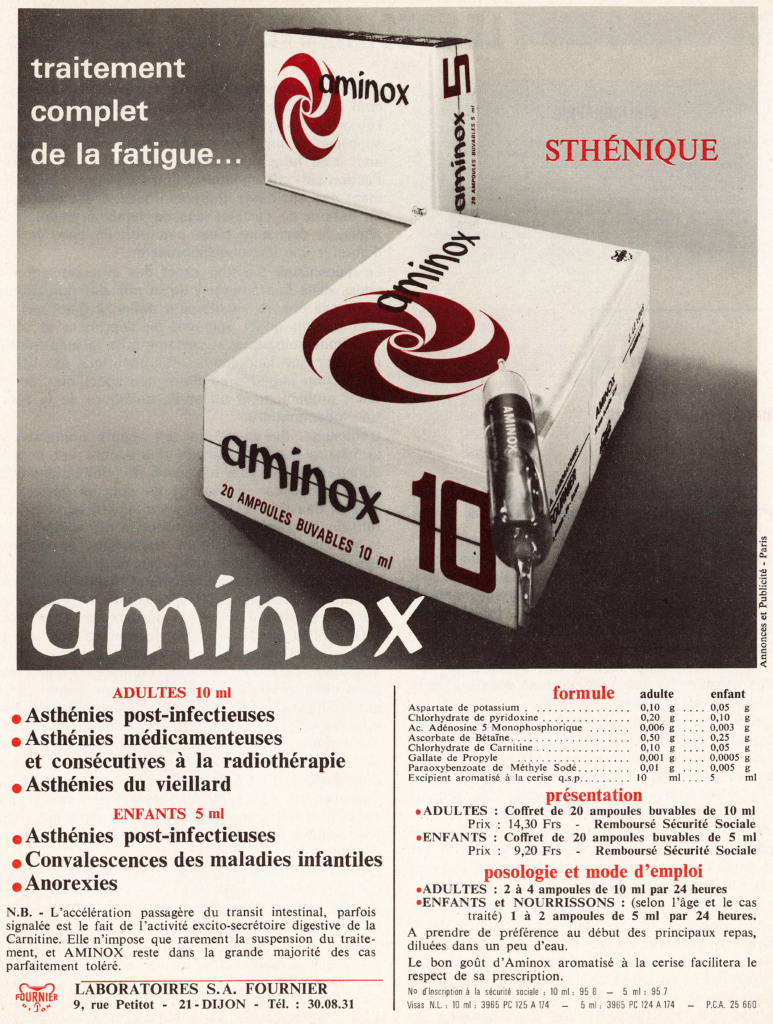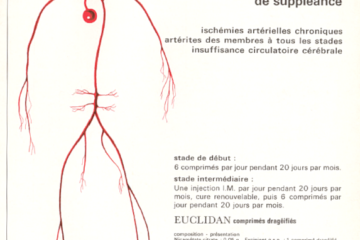The treatment of persistent or chronic fatigue requires specific medication, notably in cases of treatment-related fatigue or cancer-related fatigue. In the 1970s, the drug Aminox® was proposed to help relieving symptoms of exhaustion, weariness, lassitude, and asthenic symptoms in general. The drug was delivered in the form of drinkable ampules (with a cherry taste), containing a liquid cocktail of different fortifying agents such as pyridoxine (vitamin B6), sodium aspartate, adenosine monophosphate (AMP), betaine ascorbate, carnitine, propyl gallate and methyl paraoxybenzoate. The drug was recommended to treat post-infectious asthenia, drug-related asthenia, in particular after radiotherapy, and asthenia in ederly people, as well as anorexia in children.



The various active ingredients of Aminox are all known to combat asthenia. For example, the AMP/pyridoxine combination has been used to treat muscular asthenia in athletes, and carnitine has been used to treat cerebral asthenia. L-carnitine is an essential cofactor in fatty acid and energy metabolism. We can underline also the presence of the phenolic derivative propyl gallate (or 3,4,5-trihydroxybenzoic acid propyl ester) which is a classical antioxidant and a small molecule able to reduce proliferation of bacterial cells and mammalian cells. This compound is largely used in the food industry, for example to facilitate the storage and preservation of fresh fruits. Recent studies have reported anticancer effects with this phenolic molecule. Propyl gallate is also used in veterinary nutrition, as a feed additive for many animal species.


